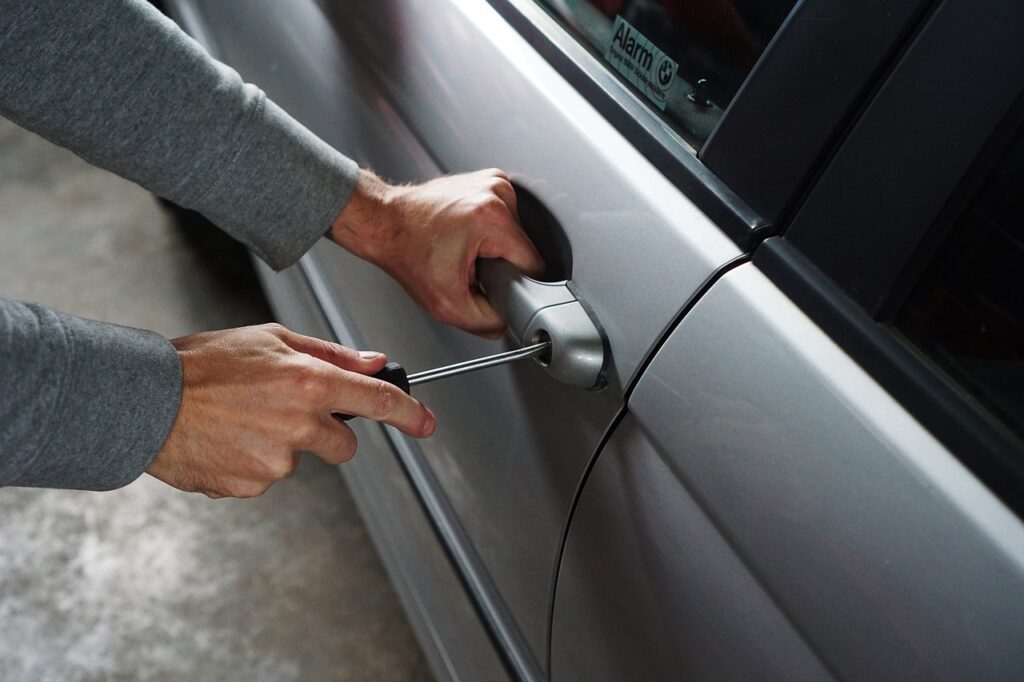Did you know that garages have always been a favored target for burglars? Aside from being a place to park your vehicle, burglars are aware that you keep other equipment and machineries there.
Aside from that, the garage also offers a secondary entrance into the home or building it is attached to, making it even more vulnerable. As technology has evolved, modern homeowners now have access to a wide range of security systems. Still, one question remains relevant today: are burglar alarms still useful in a garage?
There are many assumptions about burglar alarms being outdated or replaced by newer technologies like smart surveillance systems or motion-activated lights. However, evaluating the current role and relevance of these alarms in today’s security landscape shows that they still offer distinct and valuable protection when properly installed and maintained. Understanding how burglar alarms function in a garage setting, what benefits they offer, and how they compare to newer options helps clarify their place in a modern security strategy.
The Role of Garages in Home Security
Garages are often overlooked when people think about home security. This oversight creates a blind spot in the property’s overall defense. Many garages are separate from the main house and receive less attention. Even attached garages can become a security risk if they are not properly equipped with alarms or monitored regularly.
Unlike the main living spaces of a home, garages tend to have fewer people moving in and out during the day. This reduced foot traffic makes it easier for an intruder to operate without drawing attention. Many garages also feature outdated locks or older doors that have not been reinforced. These access points can be relatively easy to exploit.
Garages store some of the most frequently stolen household items. Power tools, car parts, and recreational equipment can quickly be carried away and resold. Garages also often have minimal insulation or barriers against noise, which means an intruder can break in without being detected by the homeowners inside.
What Burglar Alarms Do in a Garage Setting
Burglar alarms serve one primary function: to detect unauthorized access and alert the property owner or neighbors. In the context of a garage, they operate by monitoring the main door, side doors, and in some cases, windows. Sensors are placed on these entry points. When a door or window is opened without authorization, the alarm system triggers a loud sound designed to deter the intruder and notify anyone within earshot.
Some systems also send alerts to a mobile device or a central monitoring station. In garages, the use of motion sensors inside the structure adds another layer of protection. These sensors detect movement within the space and activate the alarm even if the intruder managed to enter without triggering the door sensors.
The effectiveness of a burglar alarm in a garage depends on its configuration and maintenance. An outdated or improperly installed system may fail to detect a break-in. On the other hand, a well-placed modern alarm remains one of the quickest ways to notify homeowners of a security breach and discourage further intrusion.
How Technology Has Evolved but Not Replaced Alarms
It is true that advancements in security technology have introduced many new options. Homeowners can now install high-resolution security cameras, use facial recognition software, or automate lighting and access controls. These innovations provide convenience and customization, but they do not make traditional alarms obsolete.
Most modern security systems still include a form of alarm. The loud noise produced by an active alarm continues to serve as a powerful deterrent. Burglars are generally looking for easy targets. The sound of an alarm draws unwanted attention and increases the chance of being caught. For this reason, many intruders will immediately abandon their efforts once they realize a garage is protected by an alarm.
What has changed is how alarms integrate with other security tools. Instead of being standalone devices, they are now often part of a comprehensive system. They work alongside surveillance cameras, smart locks, and environmental sensors. This collaboration creates a layered defense strategy. Even in this advanced setup, the alarm remains the first line of defense, designed to react quickly and prevent damage or loss before it occurs.
Comparing Alarm Systems to Surveillance Cameras
Cameras provide visual evidence and a live view of what is happening. They are invaluable for identifying intruders after the fact and can sometimes prevent crime if visible and properly placed. Still, they are passive unless paired with other reactive components. Watching a break-in unfold on a camera feed without an accompanying alarm or notification system does little to stop it in the moment.
Burglar alarms, in contrast, are active. Their purpose is not to capture evidence but to stop a crime in progress or prevent one from happening. A burglar may choose to retreat immediately when confronted with a blaring alarm. Cameras do not have this same immediate effect. This does not mean cameras are not useful. They complement alarms by recording events and helping law enforcement track down offenders. A garage security setup that includes both provides the best of both worlds.
The Importance of Fast Alerts and Immediate Response
One of the most valuable aspects of a burglar alarm is its speed. A properly configured system detects intrusion within seconds and responds just as quickly. This speed is critical in preventing theft or further damage. A fast alert can give homeowners the chance to intervene, call authorities, or at least ensure the intruder does not have enough time to complete the act.
The best alarm systems also provide remote notifications. Homeowners can receive alerts on their phones, often in real-time. Some systems allow users to activate or deactivate the alarm remotely or even speak through an intercom system to confront the intruder. Fast communication and response are key advantages that maintain the relevance of burglar alarms in garage security.
Integrating Alarms Into Smart Garage Systems
Today’s smart garage systems include a variety of connected devices. From automatic openers to environmental sensors and lighting controls, garages are more advanced than ever. Burglar alarms can be easily integrated into these systems to enhance their capabilities.
For example, a smart garage opener can notify you when the door has been opened outside of regular use hours. If the system is also connected to an alarm, that opening can trigger a security alert. Lighting can be programmed to turn on when motion is detected, increasing visibility and reducing hiding spots for intruders. Alarms remain at the core of these setups, acting as the central response tool that springs into action when something goes wrong.
Homeowners who use garage automation for convenience should not neglect its security component. Having the ability to monitor, control, and secure the garage from a single app gives homeowners both flexibility and peace of mind. Alarms ensure that the entire system remains focused on protecting the property and deterring threats.
Challenges of Relying Only on Modern Tech
It might seem appealing to skip traditional burglar alarms in favor of more modern options like facial recognition, smart locks, or AI-powered cameras. These technologies are indeed useful and sophisticated, but they come with limitations.
Advanced systems often rely heavily on internet connectivity. In the event of a network failure or power outage, they may become unresponsive. Cameras and sensors that depend on cloud services can be disrupted by simple technical issues. Burglar alarms, especially those with local sound alerts and battery backups, do not rely as much on these external systems. They offer a level of reliability that new technologies cannot always match.
Another issue is the learning curve associated with more complex systems. Not all homeowners are comfortable navigating mobile apps, updating software, or troubleshooting connectivity issues. Burglar alarms tend to be more straightforward and require less ongoing attention. Once installed and tested, they quietly guard the garage and alert the user only when necessary.
Cost-Effectiveness of Burglar Alarms
In terms of cost, burglar alarms remain one of the most affordable security measures available. Their installation typically requires minimal hardware, and many systems are designed for easy setup. Homeowners on a budget can still enjoy meaningful protection without investing in expensive, high-tech solutions.
While high-end security systems offer many advantages, not everyone has the means to install or maintain them. Alarms offer a practical middle ground. They provide immediate, effective defense at a fraction of the cost. Even in cases where a full system is not financially feasible, a basic alarm can offer significant peace of mind.
For those looking to upgrade over time, alarms can serve as a foundational component. As funds allow, additional features such as cameras, motion detectors, or smart integrations can be added later. This staged approach makes burglar alarms a smart starting point for building a comprehensive garage security plan.
Real-Life Scenarios Where Alarms Make a Difference
Numerous real-life examples highlight the importance of burglar alarms in garages. Consider a homeowner who stores valuable lawn equipment in a detached garage. Without daily traffic or surveillance, the garage becomes an easy target. One night, a thief attempts to pry open the door. As soon as the door sensor is triggered, the alarm activates. The sound alerts the homeowner and causes the intruder to flee before taking anything.
In another case, a collector keeps a classic car in a converted garage space. The garage is monitored by cameras, but it is the alarm that activates when someone tries to open the side door. The noise causes nearby neighbors to check on the property, prompting the would-be burglar to abandon the attempt.
These examples show that alarms are not theoretical tools. They have real-world effectiveness. Their presence not only protects possessions but also reinforces a sense of security for the owner.
Maintaining Relevance in a Changing Security Landscape
Security strategies continue to evolve, and homeowners have more choices than ever before. Still, burglar alarms maintain their relevance through a proven track record of deterrence, affordability, and simplicity. They serve as the first alert system that signals danger before damage is done.
Many new devices enhance garage security but do not replace alarms entirely. Instead, they work alongside them to create a more complete and layered approach. Alarm systems can be as basic or advanced as needed, fitting into any security budget or level of technical knowledge.
Alarms are also increasingly compatible with mobile apps and smart home ecosystems, ensuring that they are not left behind in the digital age. Their adaptability allows them to stay relevant even as homeowners explore more advanced technologies.
Conclusion
The garage remains a vulnerable point in most properties, and burglar alarms continue to play a vital role in its defense. Their purpose is simple but powerful. They detect intrusions quickly, notify homeowners, and deter would-be criminals before they can cause harm. Even in an era of smart cameras and digital automation, these alarms still provide unmatched value and reliability.

